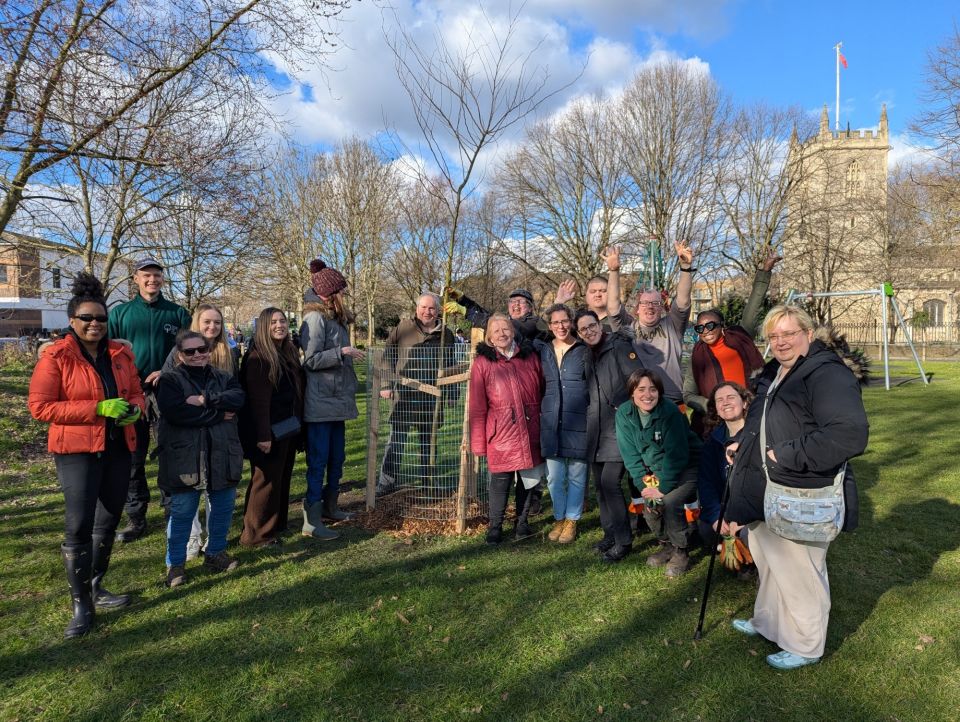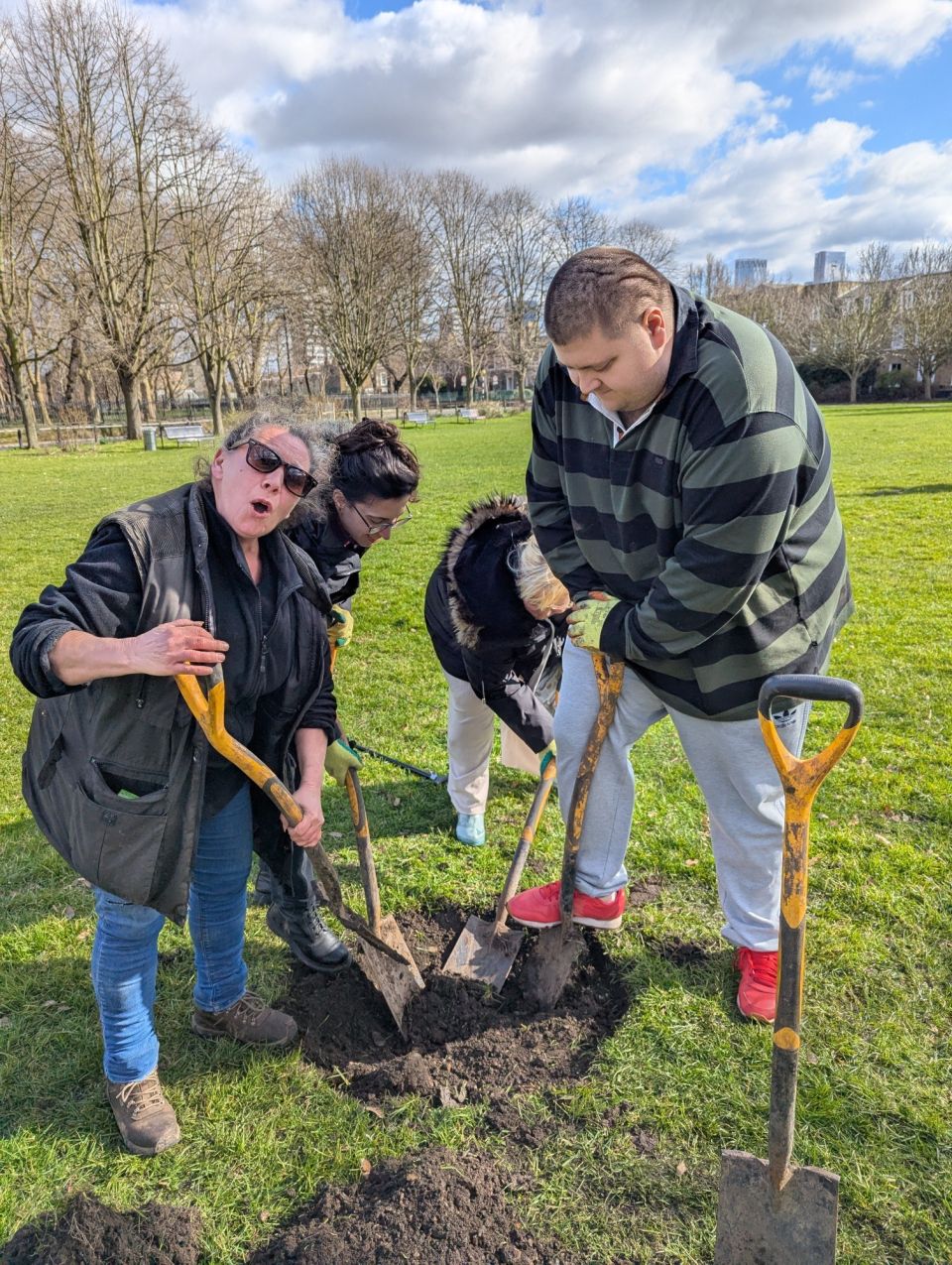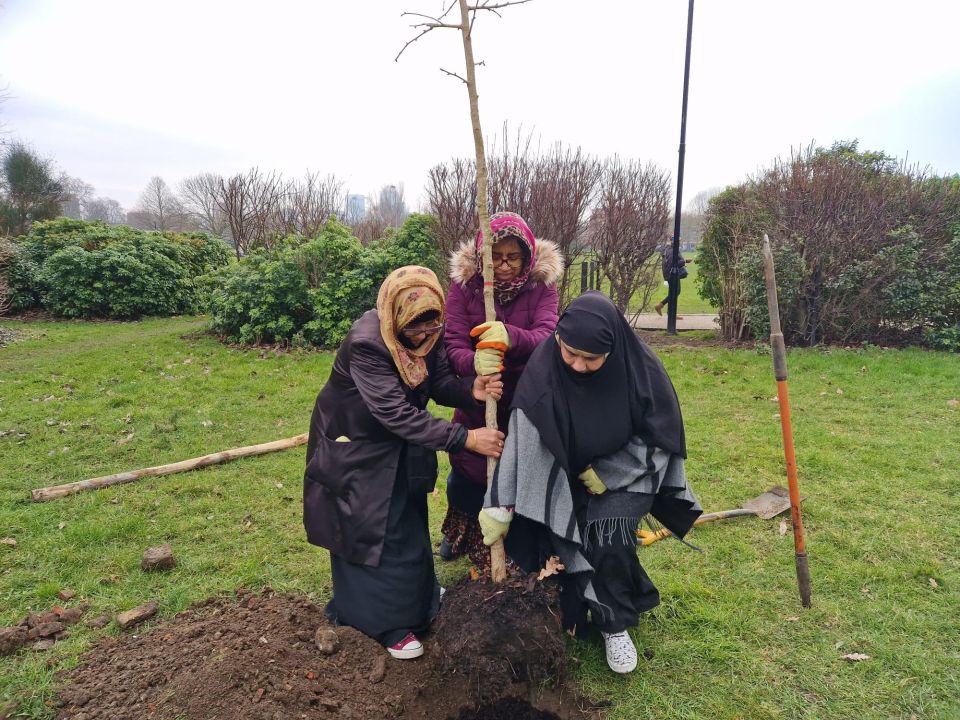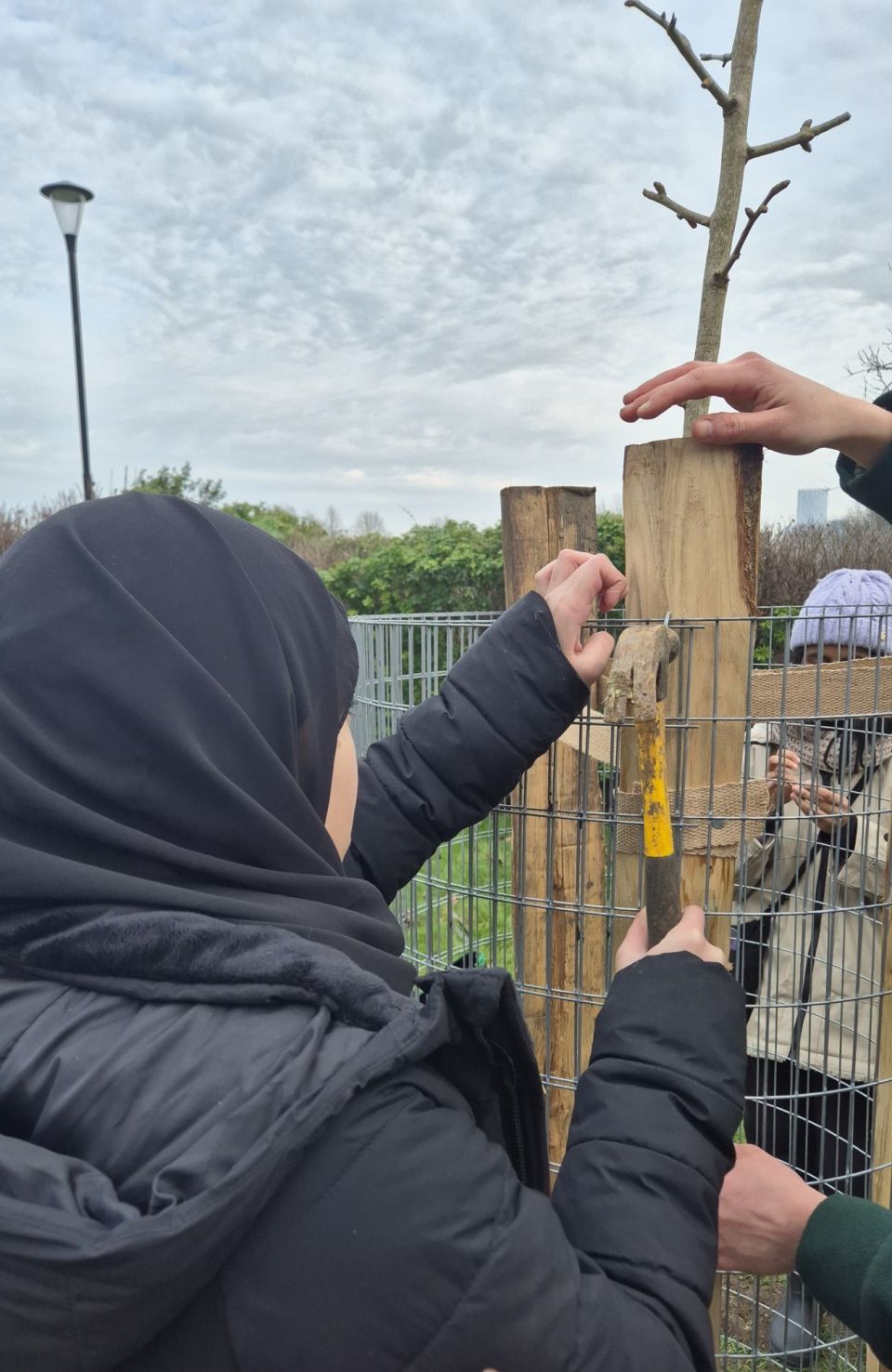New Trees for Stepney Green Park and Belgrave Open Space
Trees for Cities was pleased to work with London Borough of Tower Hamlets and local community groups to plant new trees in Stepney Green Park and Belgrave Open Space. The trees will add visual interest and increase shade in these well used green spaces.

Thank you to the local community for planting with us!
In February 2025, local community groups joined us to plant the new trees. We were delighted to plant with the Geezers, HomeEd Farmers, Ocean Women Association, Stepney City Farm's Greencare volunteers, U3A and young volunteers from the Green Wood Guild.
The groups planted the Gingko, Crab apple and Cherry trees in Stepney Green Park, and in Belgrave Open Space they planted the Hazel, Quince, Walnut, Japanese pagoda and Japanese zelkova trees. The groups also fixed the stakes and caging around the new trees, to support and protect them as they grow.
While Trees for Cities will return to check on and maintain the new trees, we always appreciate our local community partners keeping an eye out for them as they settle into their new environment.
If you would like to get involved in future projects or find out more about our community engagement, please contact community@treesforcities.org .




Why did we plant trees here?
Trees for Cities planted 16 trees in Stepney Green Park and 8 trees in Belgrave Open Space. The new trees were what we call 'standard trees'. They were planted when they were 7-12 years old and were 2-3 metres tall when they went in the ground.
Tower Hamlets is a borough in central London with mixed Tree Equity scores and medium-high climate risk. The parks are in an area with estimated canopy cover of between 14.6-19.5% (Friends of the Earth). They are well used by the local community and would benefit from new trees that increase future shade provision and add visual interest, as well as create more wildlife habitat and sequester carbon.
Stepney Green Park is a park of approximately 4.5ha consists of a large open space with a grass football pitch, and an astroturf pitch and a play area surrounded by smaller pockets of green space. Trees were planted along paved pathways in this park and care was taken to design the placement of the trees not to interfere with the sports pitch and preserve a safe, welcoming character to the site with open vistas and clear sight lines. Given the poor quality soil and historic rubble in the ground, species such as Gingko, Cherry and Maples were selected for their resilience in difficult environments as well as their visual and ecological benefits once they grow.
Belgrave Open Space is a triangular open space of just over half a hectare, with amenity grassland, play equipment, and a number of benches situated around the edges of the space. The park is bordered by avenues of large trees, the majority of which are lime trees. The new trees were strategically placed to provide shade near seating areas, while keeping an open character to the space - ensuring clear visibility along the walkway. Species such as the Hazel, Pear, Quince and Walnut also provide edible fruits and nuts and were also selected for their foraging potential for locals in the future.
Donate to Trees for Cities and together we can help cities grow into greener, cleaner and healthier places for people to live and work worldwide.
Donate